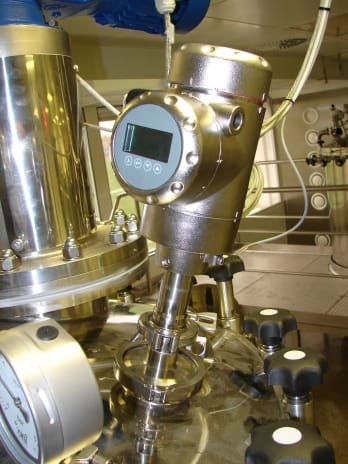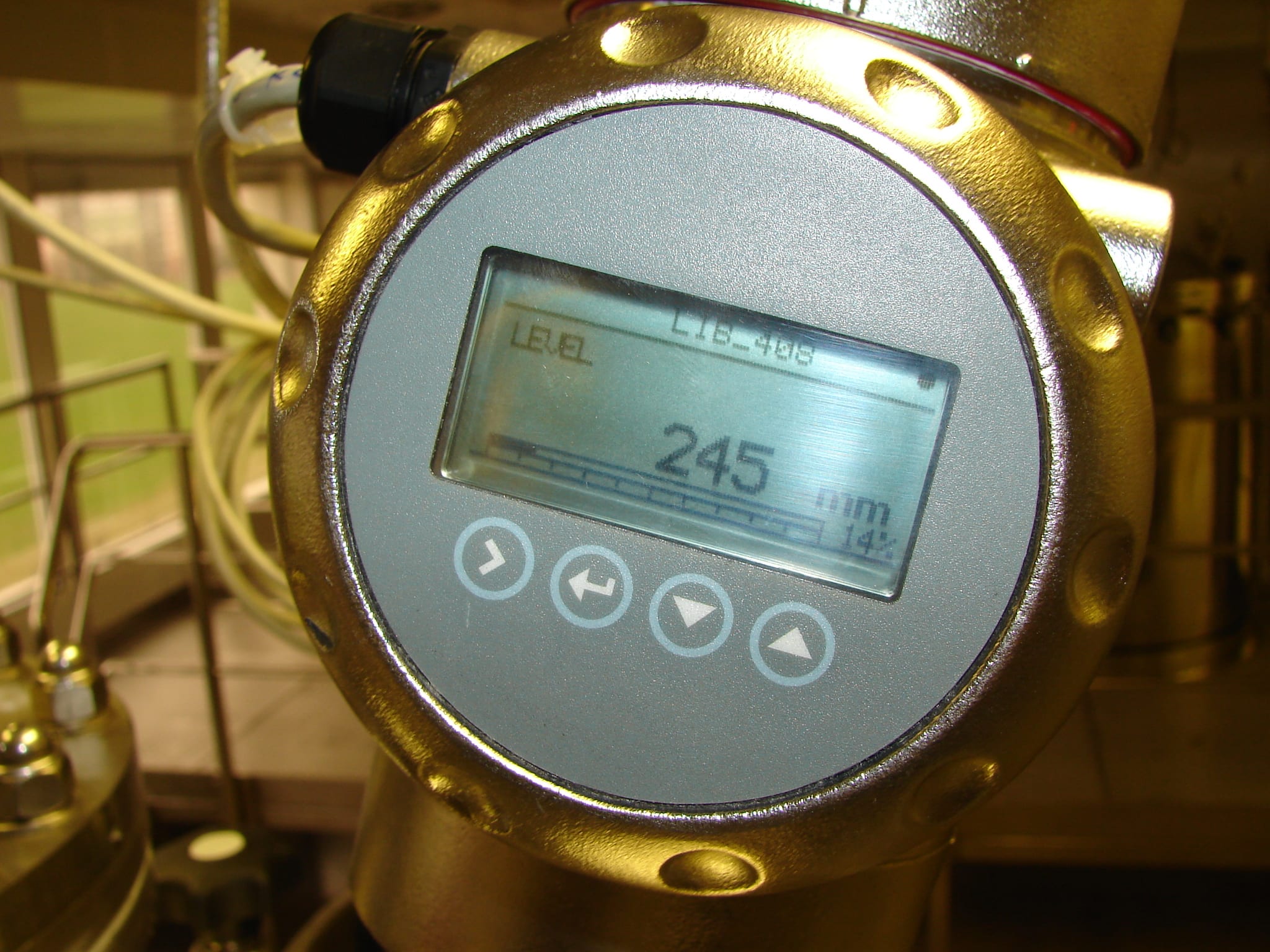Level measurement in the production of injectable drug products
Application Report | Life sciences
- Improved quality assurance and process transparency in the production of Water for Injection (WFI) based injecting solutions
- Guided radar TDR level measurement in a batch process with sanitary requirements
- Reliable monitoring of a partly boiling liquid in mixing tanks with agitators

Background
HBM Pharma s.r.o. is a contract manufacturer of pharmaceutical products for international pharma businesses. At their production and packaging facility in Martin, Slovakia, the company produces among others different bulk tablets as well as sterile liquids such as injectables in ampoules.
Measurement requirements
The production of injectables requires certain powdery additives that are always supplied by the clients to be mixed in tanks with Water for Injection (WFI). Each tank is roughly 1.7 m / 5.6 ft high and contains about 500...800 l. All tanks are equipped with agitators so that the drug powder can dissolve when mixed with WFI. In a batch process, the WFI is filled into the tanks in individual batches to produce the desired injecting solution. Mixing takes place at a pressure of 1...2 barg / 14.5…29 psig and at temperatures of up to +100°C / +212°F while the liquid in the tanks reaches boiling point from time to time.
The customer had so far used a sight glass with a scale to monitor the tank level during and after batching. Since the injecting solution produced is then filled into ampoules and delivered, this application is also relevant for the billing procedure between the contract manufacturer and its customers. To improve quality assurance and transparency over the production, HBM Pharma was searching for state-of-theart level measurement technology. The level instrumentation was to provide readings about each batch and output them to the control system.
Only a level transmitter complying with the strict sanitary requirements that also fit into the confined installation space of the tanks were to be considered. The use of free-space radars had been dismissed since the existing tank nozzles were inclined. This would have affected the beam angle. The manufacturer demanded that further changes to the tank infrastructure be refrained from.
KROHNE Solution
The OPTIFLEX 3200 turned out to be the level transmitter of choice for the pharma producer. A total of six tanks have been equipped with the guided radar level transmitter, which is particularly designed for level and volume measurement in hygienic applications. The guided radar can deal with a variety of sterile liquids like WFI based injecting solutions. It features a cast stainless steel housing and gap-free wetted parts. To fit the tight installation environment, the vertical housing of the signal converter was selected in this application. The polished Ø8 / 0.32 mm single rod probe of the guided radar was mounted using the already existing Tri-clamp connection (1”). The probe was welded to the bottom of the tanks to avoid heavy movement during tank filling.
As part of the commissioning process, the guided radars were required to be thoroughly tested and calibrated. In close cooperation with the customer, KROHNE service engineers therefore verified the tank level readings of the OPTIFLEX 3200 against a series of small batches (about 5 litres each). After each batch, the tank volume measured by the level transmitter were checked against the volume flow rates measured by a flowmeter beforehand. The performance of the KROHNE guided radar turned out to be already excellent. The results of the test measurement were then used to further optimise the setting of the level transmitters on site.
Customer benefits
In using the OPTIFLEX 3200, HBM Pharma now benefits from a central data record about all the batches produced and prepared for delivery, rather than having only local information about the tank levels. The level readings of all tanks are provided in the control room via a 4…20 mA output. The contract manufacturer can use the data for verification purposes and as additional evidence in the billing procedure with its clients. The reliable level monitoring of the batches was also welcomed by the clients of HBM Pharma, who see it as another measure to increase transparency and quality assurance just in line with the industry’s "Good Manufacturing Practices" (GMP).




